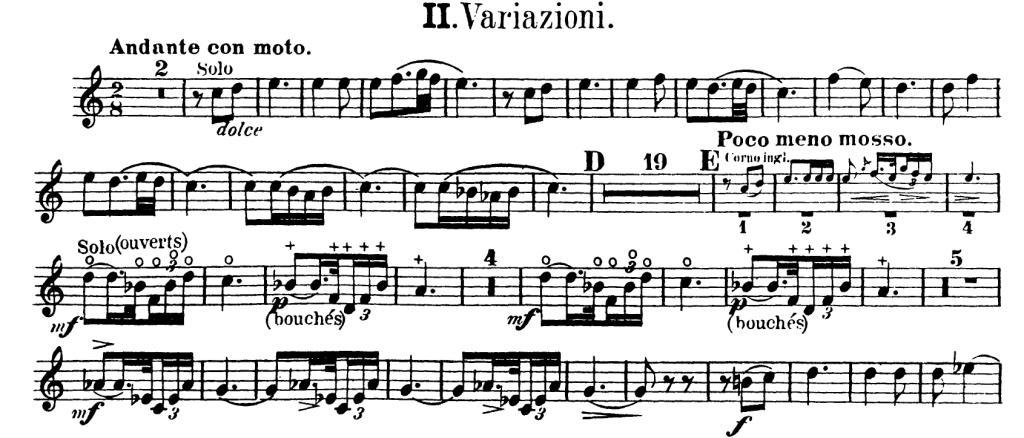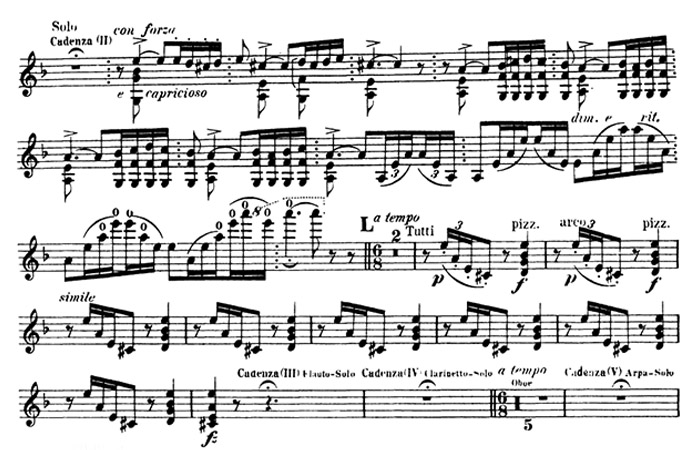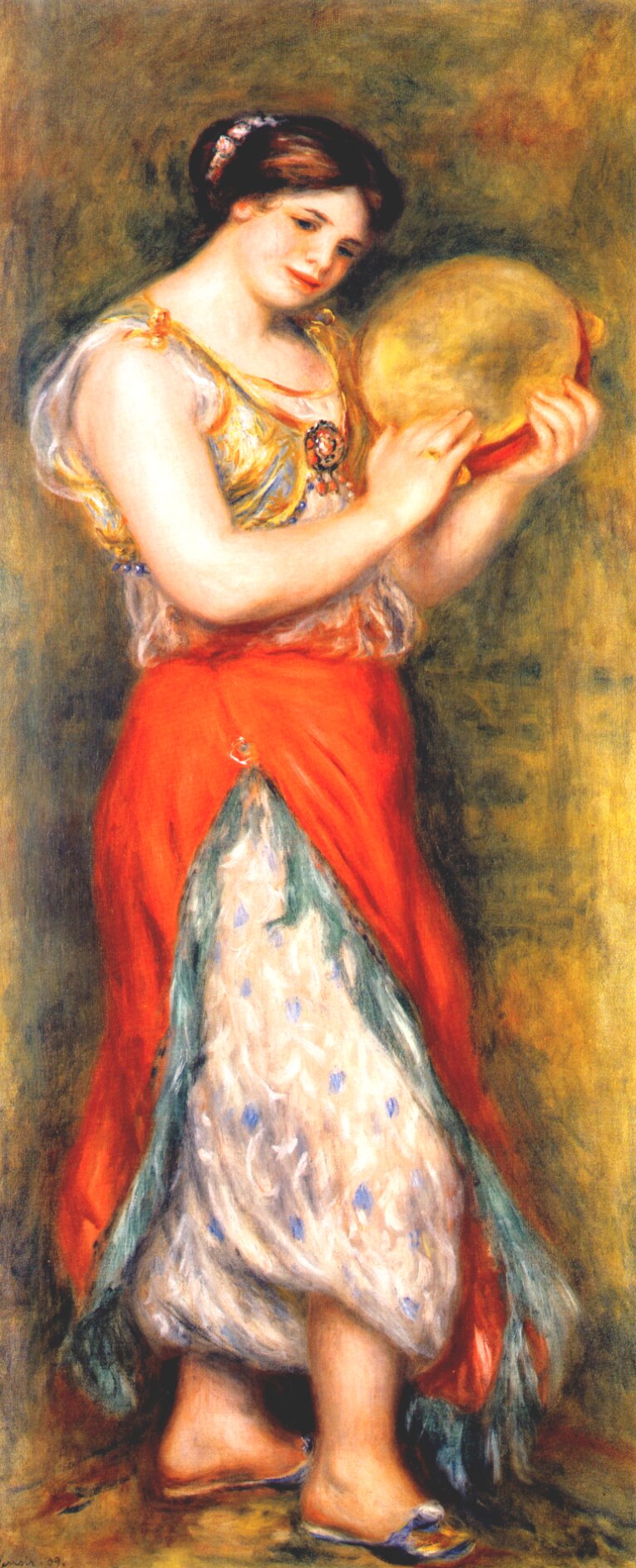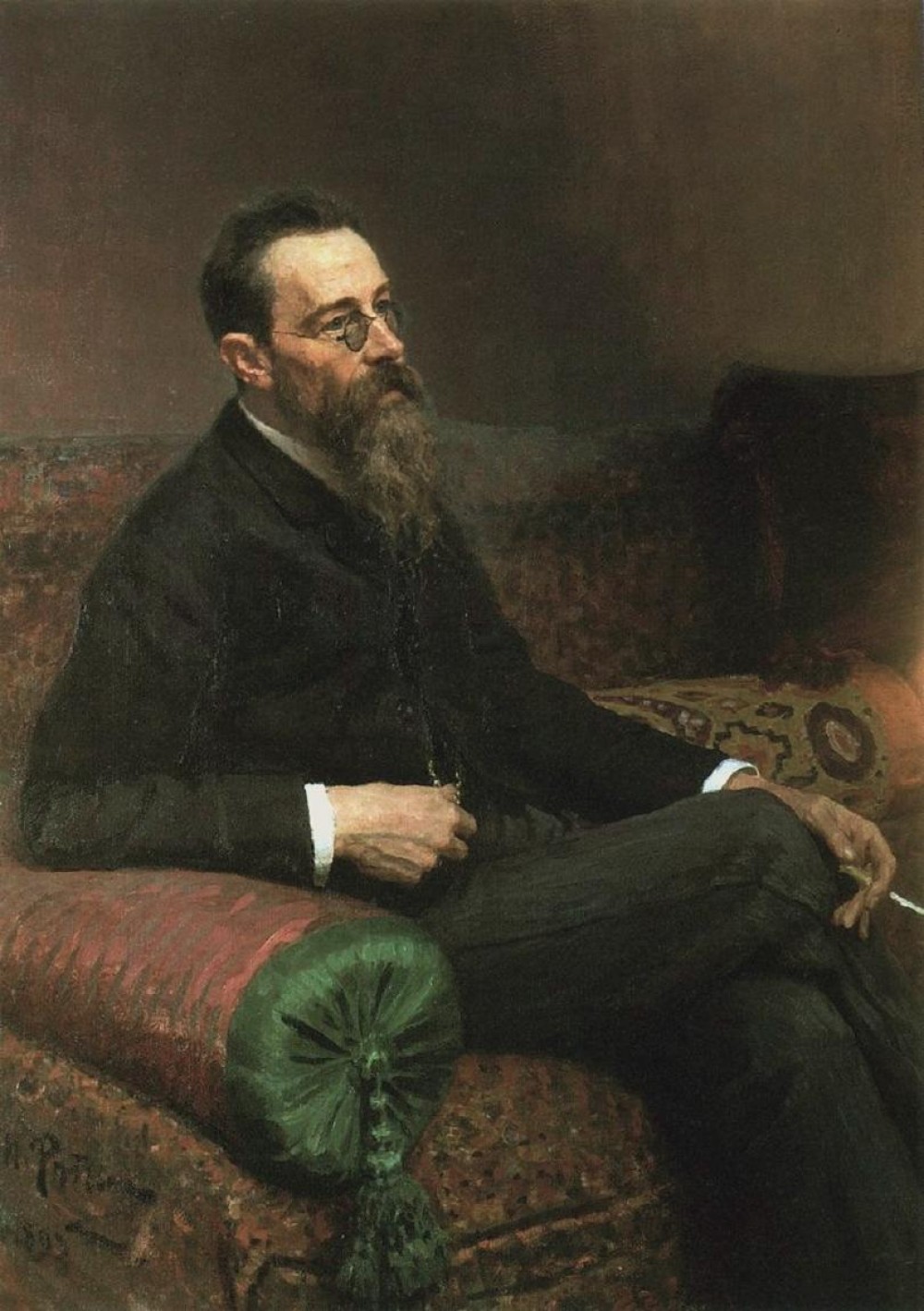“To listen is an effort, and just to hear is no merit.
A duck hears also.”
AUTHOR: Igor Stravinsky
MEANING OF THE QUOTE:
“Listening and hearing are not the same.
Anyone with healthy ears can hear.
It takes brains to listen."
COMPOSER
RIMSKY-KORSAKOV
Capriccio Espagnol Op. 34
(I, II, III)
Roselín Pabón, Conductor
Orquesta Sinfónica de Puerto Rico

Capriccio Espagnol Op. 34
(IV, V)
Roselín Pabón, Conductor
Orquesta Sinfónica de Puerto Rico

A capriccio or caprice (sometimes plural:
caprices, capri or, in Italian, capricci), is
a piece of music, usually fairly free in
form and of a lively character. The
typical capriccio is one that is fast,
intense, and often virtuosic in nature.
 Capriccio Espagnol Op. 34
Capriccio Espagnol Op. 34
Leonard Bernstein, Conductor
New York Philharmonic Orchestra
(With Pictures of Spain)
a piece of music, usually fairly free in
form and of a lively character. The
typical capriccio is one that is fast,
intense, and often virtuosic in nature.

Leonard Bernstein, Conductor
New York Philharmonic Orchestra
(With Pictures of Spain)

I. Alborada (Vivo e Strepitoso) 00:12

An alborada was an instrumental piece played
by shepherds at daybreak, usually on a bagpipe
accompanied by a tambourine or other
percussion instrument.


This a set of variations on a song that was originally
humorous and harsh, though Rimsky-Korsakov
opted for a slower, sweeter, warmer setting of it.
This little interlude is identical to the first
movement, except that it has swapped
around the instruments a bit and is in
a different key signature.

Operatic in character, its source was a Roma-gypsy song
based on a strange scale that gives the music an
exotic color. Rimsky-Korsakov’s setting is novel
and evocative in both form and orchestration.


V. Fandango Asturiano 12:08

A fandango is a Roma-style courtship dance usually
played on a guitar accompanied by castanets.


Capriccio espagnol is written in
five linked movements, (the first
three and last two are played
without breaks so the piece
comprises two big sections)
each one based on Spanish
themes. The score begins with
an alborada, which comes back
in the middle and returns at the
very end (after a recalling of the
fourth movement's "Roma" song)
during the whirling coda, complete
with castanets, to ensure a finale
which ends the work as brightly
as it began.
Rimsky-Korsakov was considered a master
of orchestration (which is the art of using and
combining instruments in a musical work)
with his deep knowledge of the characteristics
and capabilities of different instruments. The
Capriccio makes use of various percussion
instruments to add a Spanish flavor to this
piece: timpani, castanets, triangle,
tambourine, cymbals, snare drum, and
bass drum.


Rimsky-Korsakov noted in his autobiography:
"According to my plan, the Capriccio was to
glitter with dazzling orchestral color, and
clearly I was not mistaken."
He added that he did not devise the scoring
as an afterthought to its melodic and harmonic
invention, as composers often do. Instead, he
conceived this facet of the work as an integral
part of the presentation and development of its
melodies. He asserted,
"the very essence of the composition,
and not its garb or orchestration."

Listen to how these percussion instruments
add to the bright sound of the orchestra and
make this piece sound like a celebration.
 |
| Gail C. Boyajian: Capriccio |

LINKS
http://www.favorite-classical-composers.com/capriccio-espagnol.html
http://www.bso.org/media/15202/Rimsky_Korsakov_Listening_Guide.pdf
http://www.bso.org/media/15202/Rimsky_Korsakov_Listening_Guide.pdf



